In the UK, the journey to becoming a professional soccer player typically begins at a young age.
Children in the US often start playing for local or travel clubs before progressing to high school teams and potentially playing in college before pursuing a professional career. Recently, there has been a trend of teenage players signing contracts with the NWSL before completing their education.
On the other hand, in the UK, talented footballers can start their path to stardom as early as five years old. The academy system is designed to guide young players aspiring for a professional contract. Major clubs like Arsenal, Liverpool, West Ham, and Chelsea provide youth programs with full-time coaches, training facilities, and a match calendar. At 18, players are either offered a professional deal by the senior club or released to seek opportunities with other teams.
The goal is to nurture and cultivate homegrown talent, with academy programs producing icons for the WSL and England national team like Leah Williamson, Lauren James, Lotte Wubben-Moy, Lauren Hemp, Chloe Kelly, and Mary Earps. Major league teams are now focusing more on this given the rise of women’s football post-Euros in the UK.
Academy life involves more than just practice and matches. When senior clubs travel for international games, they often take a few academy players along. This gives young players exposure, bonding opportunities with the team, playing time on the field, and allows the coaching staff to monitor their progress and integration with the club.
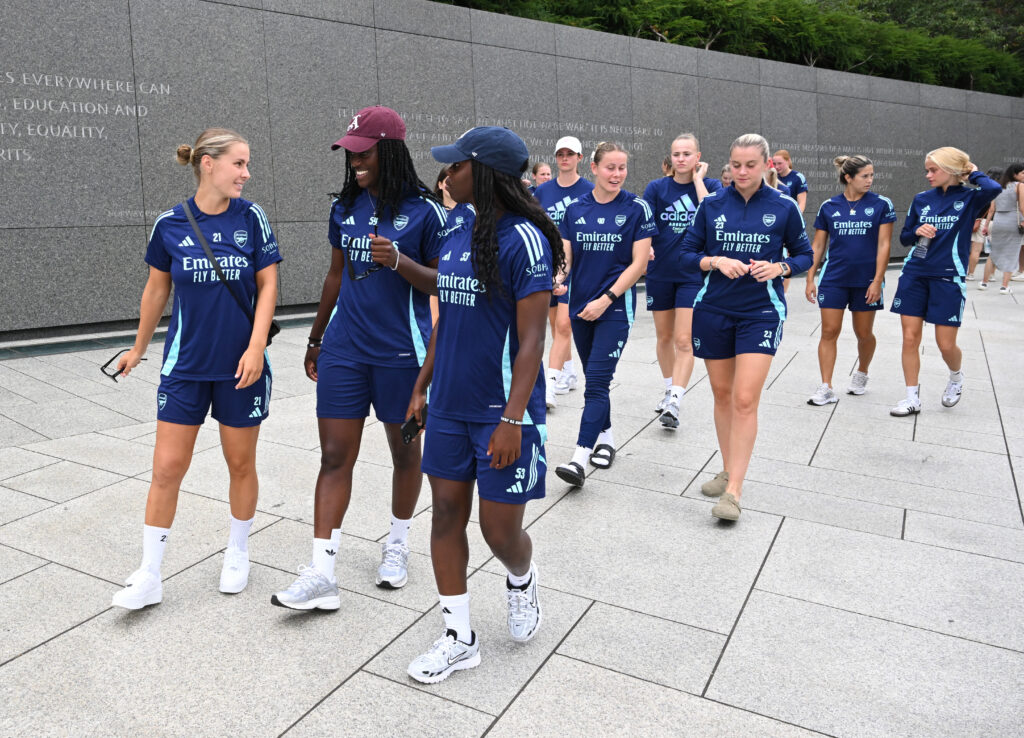
Michelle Agyemang and Vivienne Lia, two promising academy products, recently joined Arsenal FC on their USA tour. Agyemang, who graduated from Arsenal’s academy, signed her first professional contract in May at 18, while Lia, still in school and academy training, played with the senior club for the first time in February 2024.
Recently, JWS interviewed the England U19 standout players in Washington, DC before Arsenal’s friendly match with local rivals Chelsea to discuss their journey from childhood fans of Arsenal to academy stars and beyond.
How’s the trip going so far?
Michelle Agyemang: It’s been good so far. It’s been nice to explore the city, see the monuments, and of course, engage in training. Being around everyone has been great too.
Viv, this is your second team trip after Arsenal’s Australia exhibition in May. How are you finding it?
Vivienne Lia: The trip has been great. It’s been a different experience compared to Australia, more relaxed but also intense due to pre-season training.
How old were each of you when you signed with Arsenal Academy?
MA: I was six.
VL: I was 14.
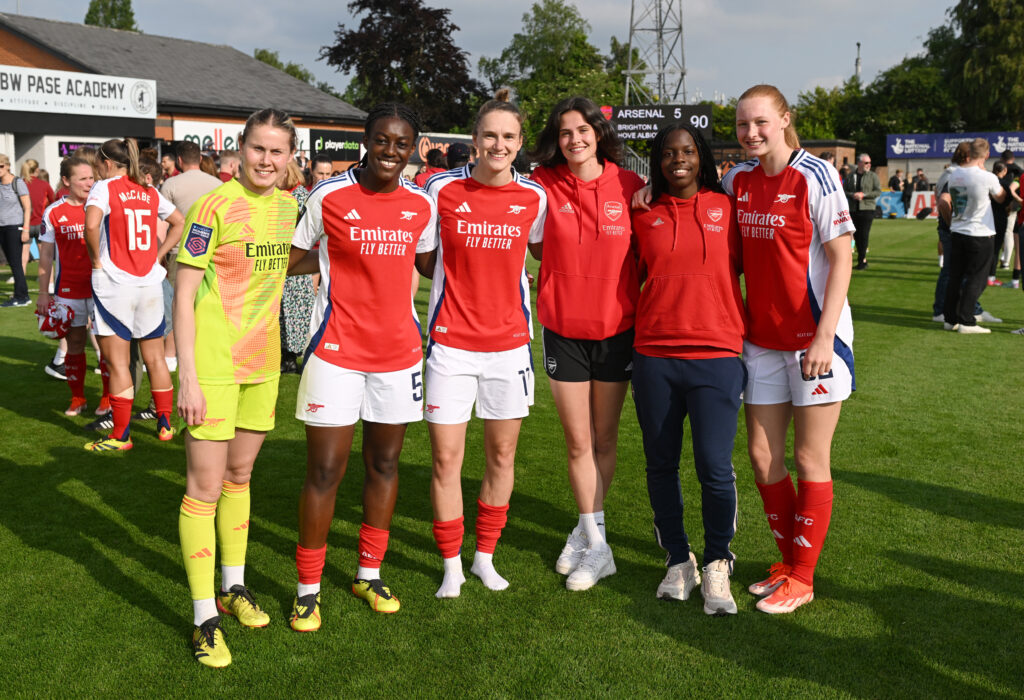
I know Arsenal has recently moved away from academy trials and now uses a talent identification team to recruit young players, but what was the process like when you joined?
MA: Initially, it involved applying on a website, attending a trial with around 30 other girls, and progressing to a second round if successful. It was relatively straightforward.
VL: The process was similar for me with trial sessions leading to a final decision via email.
Did your parents sign you up?
MA: My dad signed me up after seeing potential in me playing for a local boys team. We then attended a training session nearby.
Do you remember that day?
MA: Yes, I remember it vividly. We got lost on the way and ended up in the wrong place initially. My dad even played a small prank on me before revealing the good news.
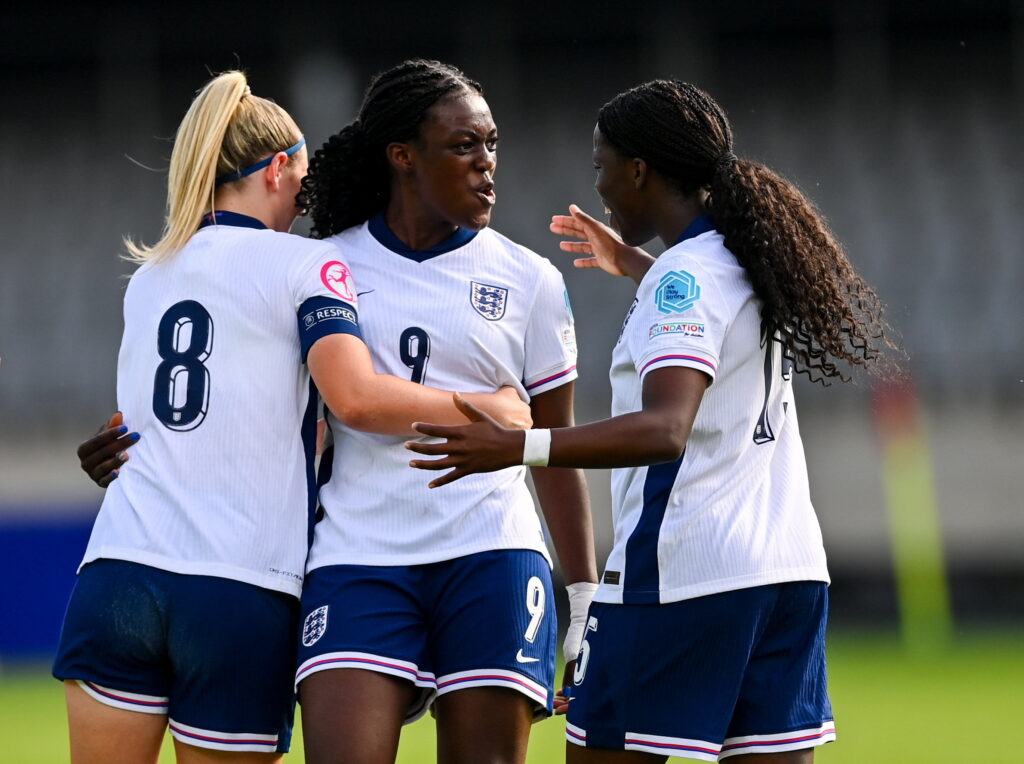
If you were raised in the US, do you think you would have tried to turn pro at a young age or opt for the college route?
VL: I would likely have chosen the college route initially to ensure a strong educational foundation. A career in sports is never guaranteed, and having an education is essential.
MA: I agree, the college experience seems valuable with a balance of education and football which is lacking in England. It can provide a good mix for development.
When you’re in the academy, how much time are you devoting to soccer?
MA: I dedicated as much time as possible to both school and training. It was a busy schedule of school, car rides, training, and homework to manage both effectively.
VL: It’s a mix of passion and hobby at a young age, but as you grow older, finding a balance between school and training becomes crucial. In England, the system requires juggling school and training sessions, requiring a good balance.
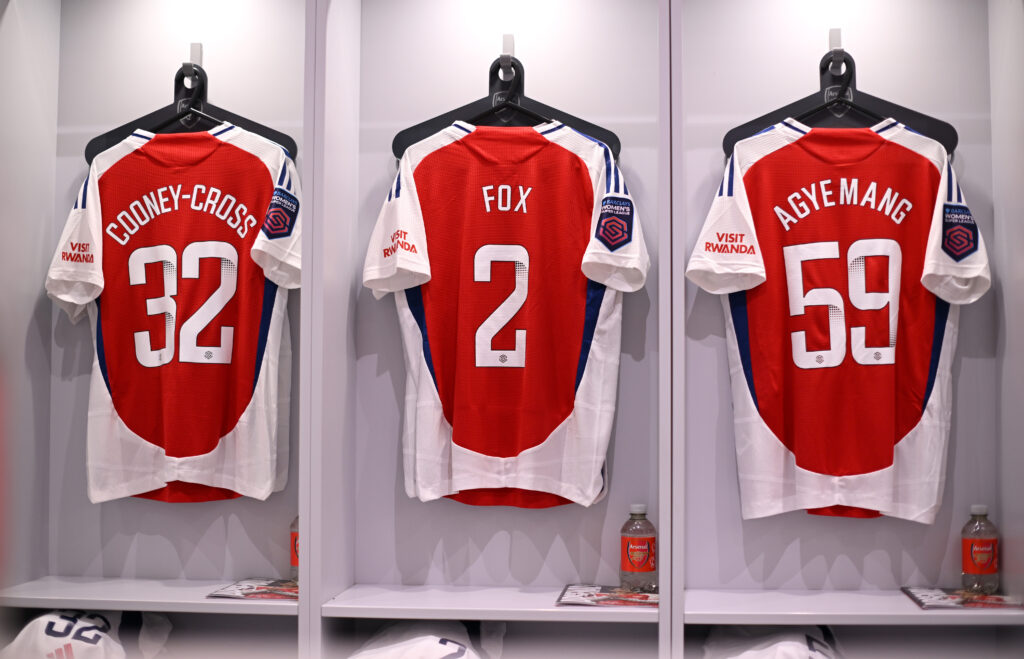
So you’re both lifelong Gooners — was Arsenal always the dream?
VL: Absolutely, growing up in North London, playing for the local club was always the dream. Making history at Arsenal is something I aim for.
When you were younger, did you see women’s football as a viable career path?
MA: Initially, women’s football wasn’t seen as a viable career. The rapid development of the game changed perceptions, and it became a career option as the sport grew bigger.
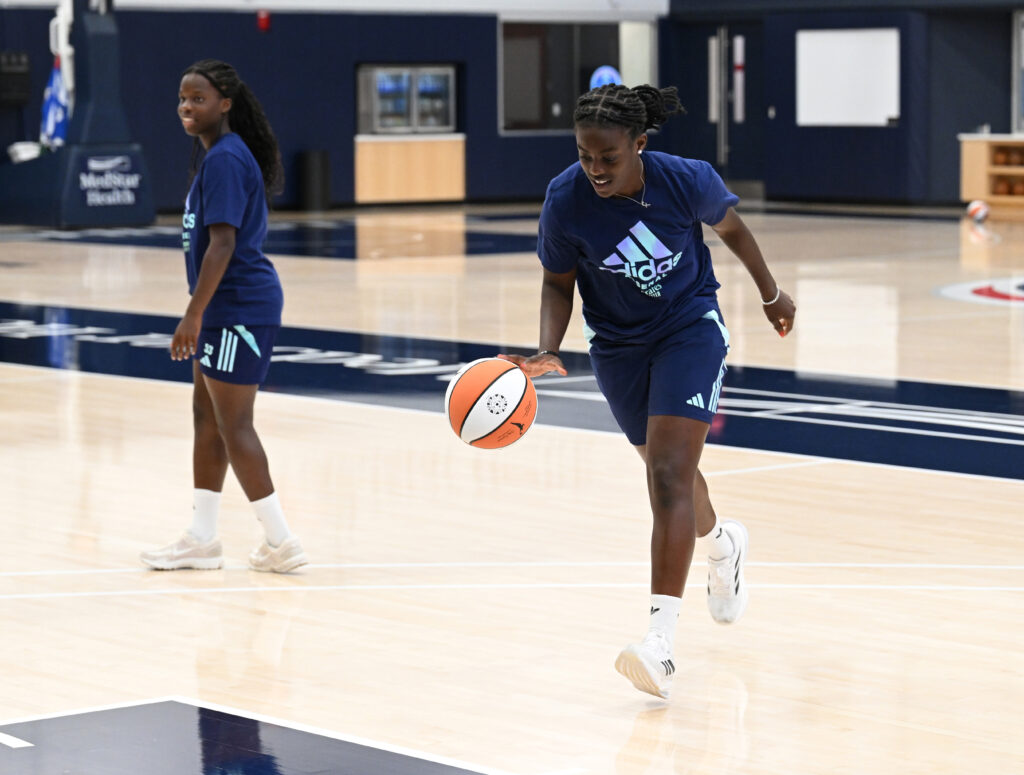
Was the experience the same for you, Viv, seeing as you joined the academy a bit later?
VL: My love for football led me to aim for a sports career, football specifically. While unsure initially, over time, I realized it was a viable profession. As a kid, you believe anything is possible, and it evolved into a professional goal.
How has your game changed as you’ve gotten more time at the senior level?
MA: Playing at Arsenal has honed my technical skills like passing and teamwork. As a kid, it was about scoring goals, but as I matured, teamwork became pivotal.
VL: The senior level emphasizes the importance of details and mental alertness. Quick decision-making and understanding the speed of the game are critical differences from youth football.

What is your favorite Arsenal memory?
VL: The Champions League game against Bayern Munich is a standout memory, especially Frida Maanum’s goal. Witnessing that moment as a ball girl was incredible.
MA: My favorite memory is from a Champions League semi-final against Wolfsburg two seasons ago. It was my Champions League debut, and the atmosphere with over 62,000 fans was unforgettable.
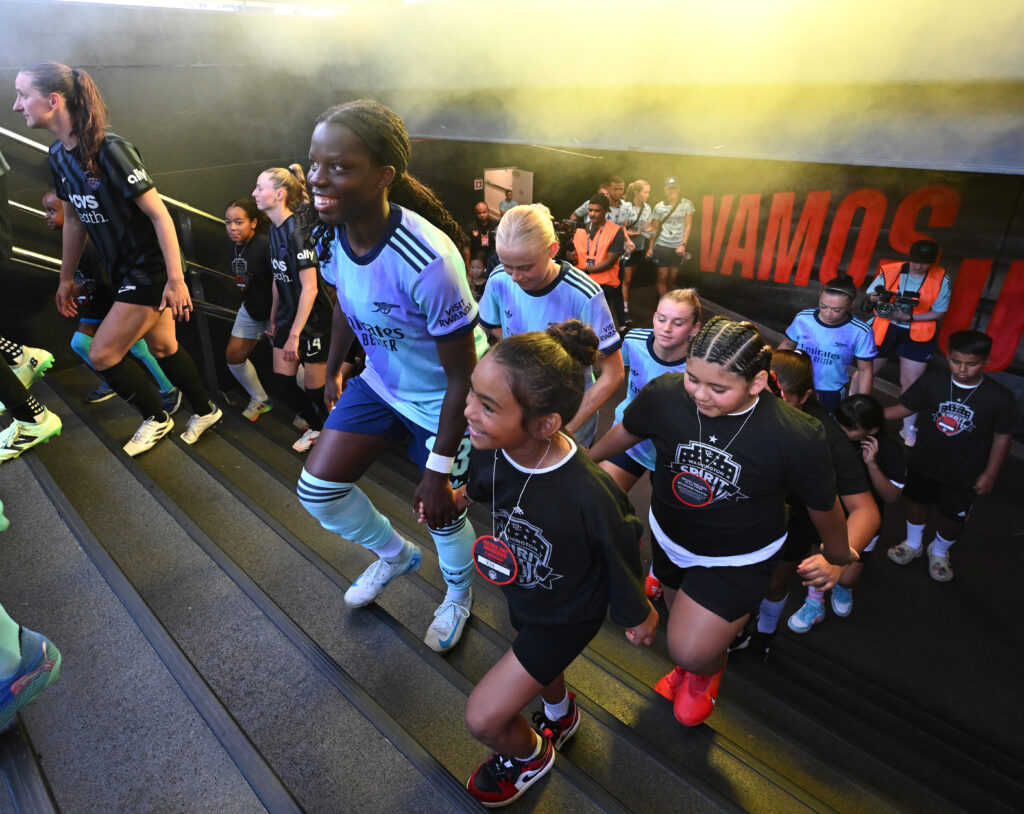
After playing the Washington Spirit, how does the NWSL compare to the WSL? Is there a different approach to the game?
MA: The NWSL is known for its athleticism, leading to a faster-paced game. The atmosphere and fan engagement are unique, creating a different vibe compared to the WSL.
VL: The NWSL game is quick and physical, emphasizing athleticism. The technical aspect is slightly less but still at a high level, showcasing a different style of play.
Where do you see yourselves in five years?
MA: Right here in DC.
VL: Establishing myself at Arsenal and progressing in the senior game.





















